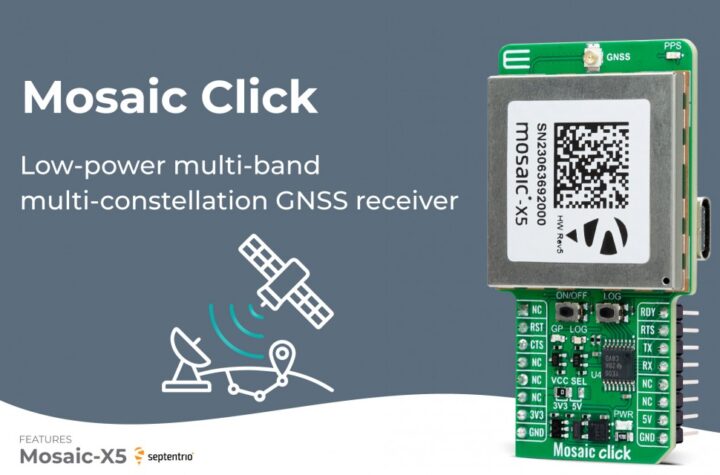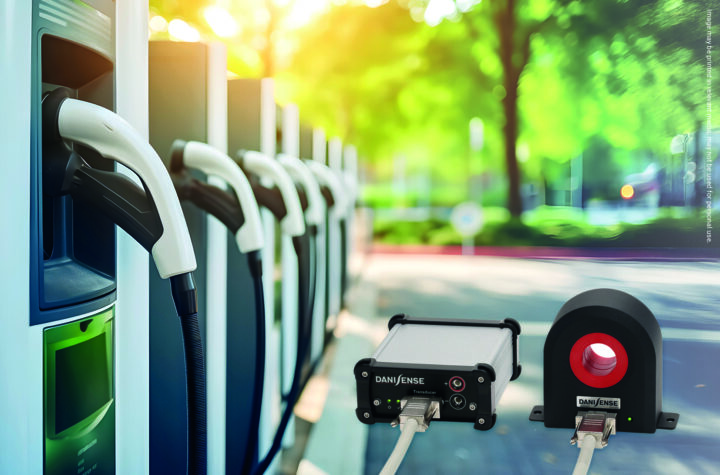
German electric power and natural gas public utility RWE AG is gearing up for the electric vehicle challenge. The biggest global challenge for EVs has been charging these vehicles. According to Pike Research, the increasing popularity of EVs will require the roll-out of a new infrastructure for charging access at home, work and around cities. “By 2015, access to vehicle charging will be available at nearly one million charging points in the United States. Vehicles in the US will be primarily charged at home as early adopters will prefer the convenience, while in the rest of the world, public charging will play a more central role due to reduced access to convenient home charging. The Asia Pacific region will lead global EV charging equipment sales due to strong government incentives and directives. Bi-directional smart vehicle-to-grid charging will be slow to take off and will be limited to fleet applications through 2015,” says the Pike Research study which came out in 2010.
The 2010 Pike Research report analyzes technology and business issues related to the buildout of electric vehicle charging infrastructure in global markets. It examines the market for residential, public, private, and workplace charging stations as well as reviewing the key operational and technological impacts of plug-in hybrid and battery electric vehicles on the grid infrastructure. Analysis includes an in-depth assessment of market drivers and barriers, along with profiles of charging infrastructure vendors and utilities.
For RWE, the electric vehicle challenge has already been something it has factored into its business plan. In 2008 Daimler AG and RWE launched e-Mobility Berlin – the world’s largest joint project for environmentally friendly electric vehicles in the German city of Berlin. Under the project, Daimler provided more than 100 electric cars from Mercedes-Benz while RWE handled the development, installation and operation of the charging infrastructure. This involved setting up around 300 charging points, supplying electricity and providing central control of the system. The payment system took the form of the exchange of data between a special in-car communication system and the intelligent charging point. The e-Mobility project was supported by the German federal government.
“RWE has the energy to lead. With our capital and our know-how as Germany’s largest power generator, we are joining forces with Daimler AG to promote climate protection. E-Mobility for every private customer – it is with this in mind that we are developing a comprehensive concept including an individually tailored, intelligent and convenient charging structure at home, at the workplace and in public places. This also includes tariffs which everyone can afford, including for example a price guarantee or in the form of an eco-power tariff,” said Juergen Grossmann, CEO of RWE AG in a 2008 press release.
He added: “The charging points will be installed at the customer’s home, at the workplace and in public parking areas. In addition, business-to-business partners such as shopping centers, car park operators and fleet customers can be connected into the infrastructure. The accounting system should be as simple and convenient as when using one’s mobile phone.”
According to Pike Research, the additional power demand from EV charging will have little overall impact on grid reliability, but could impact on the reliability of distribution equipment in neighborhoods with the highest EV concentrations. Utilities will have to prepare for the additional load on the grid by tracking vehicles sales and creating new consumer billing programs. Charging equipment sales will initially be driven by government funding of public stations, says the market intelligence firm cleantech. According to Pike Research, a total of 4.7 million such charging points will be installed worldwide during the period from 2010 to 2015. “The success of hybrid vehicles in the 2000s gave drivers a taste for propulsion by electric power and governments around the world are now highly focused on creating the charging infrastructure to support the arrival of EVs in significant numbers,” said John Gartner, senior analyst at Pike Research in a 2010 press release. He added that he expects that by 2015, more than 3.1 million EVs, including plug-in hybrids and all-electric vehicles, will be sold worldwide.
RWE has always tried to emphasize the importance of greener technologies. In 2008 the company stepped up its commitment to power generation from renewable energies. The skill resources and activities including those in Germany, France, Spain and Great Britain, which were previously pooled in various group companies, were merged in the newly created company RWE Innogy GmbH which is headquartered in Essen. The company was launched with 600 employees and a generation capacity of 1,500 MW. The company’s creation was followed by projects for the construction of new wind farms in Hungary and off the Dutch coast and by a stake in the development of a tidal stream power plant.
Automotive Industries spoke to Carolin Reichert, head of electro-mobility, RWE Germany.
AI: Tell us how the e-Mobility project in Berlin is doing – how has it grown since its inception in 2008?
CR: Our pilot project which we operate together with the Municipality of Berlin and DAIMLER as our OEM partner has been a huge success. In actual fact, we installed and operate more than 200 publicly accessible charging points in the center of Berlin, and we also supplied our domestic infrastructure to pilot drivers of the Smart electric vehicle. The attendees are completely satisfied with the driving behavior of the Electric Vehicle and they really like the ease of charging of our infrastructure, which is a real vote of confidence for our technology. We have also gained extensive experience in installing public and private charging points and familiarize ourselves with the still very complex permission process in installing street furniture. The feedback from our customers in the pilot project and the experience we have gained in the course of the project will help us to remain the market leader in Europe for charging systems.
AI: Tell us about the insights that you have gained from this project and how it has helped to contribute and shape the RWE business model, R& D and current strategy?
With more than 200 public charging points in Berlin at present, we are currently the only provider offering a comprehensive charging grid in a European metropolitan area. Access to this charging infrastructure is offered on a subscription model. The customer pays a monthly fee of 9,99 € which gives him or her access to all public charging stations at any time. The amount of energy consumption is paid by kWh at the regular domestic price level.
In our experience, this subscription model is an ideal fit for the demands of the end customer (both private customers and companies) and we have found that the contract also meets the requirements of the suppliers of Electric Vehicles. Some of them offer the contract as a non-binding product together with their EVs. On the other hand, we have also discovered that, especially in inner city areas and at ultra-fast charging stations, the demand for direct payment systems, such as systems using credit cards or smart phones, is growing fast. Our infrastructure is also able to meet this demand.
This expertise in establishing such business models is one of the services we now successfully offer to our infrastructure clients on an international basis, such as local authorities and local utilities. In our opinion it is a real differentiation factor to sell products and services which we are using in our own projects.
AI: How do you see this challenging new technology sector (EVs and the subsequent charging technologies required) developing over the coming years?
Almost all the major OEMs have realized that the challenge is not just developing single vehicle types, but electrifying the whole fleet systematically. This is why launch strategies are in place for existing vehicles in all the different segments of their fleet, covering different types of driving, from pure electric city vehicles to long distance vehicles with a range extender and Plug-in-Hybrids. Depending on the vehicle category, the size of the battery and the performance of the charging process will become distinguishing features . As major trends I would like to point out three movements:
First, fast and ultra-fast charging are becoming more and more important. In residential areas, we have also seen increased demand for a fast charging infrastructure.
Secondly, we have observed that basic de facto standards have been established in various regions of the world. For example, in North America we see in particular AC Level 1 and 2 charging based on SAE J1772 as well as the DC ChaDeMo standard.
And thirdly, we are experiencing an increasing demand for ”smart technology“, which allows an integration of renewable energy into the power grid . Utilities and Municipalities in particular have realized that such intelligent systems help to avoid costly grid upgrades within the coming years.
Our infrastructure offering meets all these requirements and we are happy to advise customers in choosing the right combination of technologies.
AI: How closely has RWE been working with OEMs internationally to create a standard among utilities firms? Is there a need for a closer working relationship with the OEMs and their Tier 1 and systems suppliers?
RWE has been deeply involved in several standardization groups ever since the beginning of the EV movement. In Europe we are one of the key players and prime movers in terms of standards and public adoption of different technical solutions. In the mean time, a number of different bodies and institutions are up and running. In our opinion, there is no urgent demand for implementing additional processes because all the required stakeholders such as OEMs and other utility companies are involved already.
AI: What are the solutions and applications that RWE has been developing for EV charging?
Providing the right system and hardware solution for each of our customers, the variety of RWE products now contains domestic chargers as a market-entry item as well as intelligent public infrastructure, which provides fast and intelligent AC charging. Only a few days, we unveiled a combined solution of an AC charger and a DC ultra-fast charger together in one item. We have also developed different options for authentication and payment as we came to understand different demands from our customers.
But it is not just all about hardware. Having developed an in-depth understanding of the demand for a systematic approach to these infrastructure projects, we also offer the control system and we provide 16 different services to our customers around the world. Especially in the United States, service is one of the key demands of public infrastructure programs. We provide support in installation, maintenance, system operations, and we have defined specific service levels.
AI: According to your own research, what are the most important aspects that the consumer is looking for in an electric vehicle in terms of
recharging?
The core challenge is quality and convenience of charging, which means easily accessible locations as well as simple authentication and payment systems. Secondly, drivers want to have the option of fast charging when it is required. And the third demand is safety. Customers are afraid of voltage and so they really have to feel comfortable with operating the equipment.
AI: How might a global standardization finally come about with regard to the technical and safety requirements for EV charging stations?
It is quite clear that in future we will see regional standards relating to the physical connection as well as the data transfer between vehicle, infrastructure and grid. These standards will vary between Europe, North America and Asia. But it is also clear that the ongoing cooperation of the global players, such as the major OEMs, as well as the international infrastructure operators will enable international sharing of know-how and will therefore establish a minimum standard in charging technology.
AI: What are some of the different challenges regionally for the development of a comprehensive and competitive consumer charging network? Does RWE have a consumer awareness strategy?
The biggest issue around the world is the mandate to establish a comprehensive charging network which is able to serve all available Electric Vehicles. At the same time, the infrastructure system must pay attention to the specific local conditions such as traffic patterns, grid reliability, the parking situation as well as customer behavior. To combine both, the local conditions and the availability of different standards define the success of a systematic rollout of publicly accessible charging infrastructure. If we have a closer look at the regional conditions, we have to admit that there already are different strategies. The funding situation in particular is managed in different ways. In China and Japan, the Federal Government shoulders the lion’s share of infrastructure rollout projects, while in Europe and North America, the funding situation still unclear, or the governments limit their support to a few “stand alone projects”. The biggest issue in this regard is to validate the funding since this is one of the critical conditions for the success of implementing Electric Vehicles in individual transportation systems.
As an infrastructure provider focusing on Europe and North America, RWE has developed a systematic approach to this issue in order to overcome these obstacles and support municipalities and regions in planning their infrastructure rollout. In this systematic project setup, we place particular emphasis on selecting a suitable, future-proof technology, setting up a sustainable, systematic rollout plan and defining an individual business model for each customer. This activity will increase customer awareness of our infrastructure solutions.
AI: What is RWE’s strategy in building charging stations globally?
Since we launched in 2008, my team has developed at high speed. At present, there are almost 100 full-time employees working around the world in order to ensure that we remain one of the leaders in Electric Vehicle infrastructure. In 2010 we began to market our charging systems internationally. Our key markets in this regard are Europe and North America. Furthermore, we are keen to establish our position as a market maker, so we are continuing to build up our infrastructure in the European cities where the RWE group already has a footprint. In these areas, we work together closely with the local utilities. We will continue to develop the best available, price-optimized and flexible infrastructure system for Electric Vehicles. This is our strategy.
AI: How will the development of the EV sector impact on the reliability of the grid?
In my opinion, there is no other option than an intelligent charging infrastructure. Selecting a system which allows a grid and data management will be the only way to avoid dramatically higher costs in upgrading grids in the coming years.
AI: How has the new transport sector been accepted by the policy makers, both in USA and in EU and, in your opinion, how could they assist more in bringing this about more rapidly?
As we can see, politicians at a federal and municipal level focus on Electric Vehicles in terms of individual transportation. Especially with regard to local frameworks, there is a demand for clear, customer-friendly permission processes, and to establish Electric Vehicles in urban areas. Politics should stimulate the demand for EVs by offering subsidies and advanced conditions for those who are engaged in the EV value chain. To accelerate this process, it is essential that Federal politicians take a leading role and define this essential framework.
AI: What sets RWE ahead of the global competition?
We already operate more than 600 charging points across 18 countries, we manage all of them with our own back-end system, and our publicly accessible infrastructure is “smart grid ready”. So we already a significant experience and we can currently deliver a broad product range. As a department of a traditional utility, we additionally have an in-depth understanding of smart grid technologies. As a company with more than 70,000 employees, we have the strength and size to be a serious strategic partner for major OEMs. And finally, thanks to our modular system, we can already provide infrastructure for various local conditions, different standards and individual customer scenarios.














More Stories
AVL ThermalLab™ brings dynamic road VTMS conditions to the laboratory
Sika – where battery storage technology for EVs, wind and solar meet
Driving Change with Circular Aluminum: Hydro’s Role in the Automotive Future